Just a few years ago Cassandra Dias was a mum of two young children, dabbling in a variety of crafts she sold from her Etsy shop.
A gifted bag of DMC threads and the quieter times in 2020 gave Cassandra the opportunity to learn and experiment with her stitches. Adopting her love of impressionist painting, and using her own photos of the vineyards, hills, seascapes and rivers of her native southern California, Cassandra found plenty of inspiration for her chosen subject of landscape embroidery.
As she worked on her skills, she posted regularly on Instagram, growing an impressive following. It wasn’t long before she received requests to buy her artworks and to take commissions.
Today, Cassandra delights in not only being a stay-at-home mum for her children, but in her discovery of the freedom of stitch and the joy of creating exquisite miniature landscape embroideries.

Dabbling with art forms
Cassandra Dias: I used to love colouring, drawing and painting as a child, and remember being encouraged to enjoy art. I took art classes throughout junior high and high school, studying acrylic and oil painting, sculpture and ceramics. My peers even voted me best artist for the high school yearbook.
In college I decided to take a break from art in order to find a more traditional career, but none of the classes I took really held my interest. So, after graduating, I came back to art and started creating again. I taught myself crochet and silk screen printing, and opened an Etsy shop where I sold my handmade items.
With every art form I’ve tried, with the exception of formal classes at school, I’ve taught myself after researching the basics. I enjoy challenging myself to see if I can learn to make things with my own hands.
“Teaching myself a new skill is something that is really fulfilling for me, and that’s probably why I’ve gone in so many different creative directions during my life.”
Cassandra Dias, Textile artist


Discovering embroidery
I started embroidery in January 2020 because I wanted to add another art form to the list of things I’ve tried.
While browsing Instagram, I saw pretty floral designs with lots of neat satin stitch leaves and woven wheel blooms. I guess I was initially attracted to the visual appeal of these pieces. But when I actually went to visit the artists’ pages, I found that a lot of them were moms, just like me.
It was nice to see them in their various stages of motherhood with photos of them simply being mamas to their kids – but also to see posts devoted to their love of embroidery.
“I felt a sense of connection to these women who had made time for themselves to have a creative outlet.”
Cassandra Dias, Textile artist

At the time, a couple of women I followed on Instagram – Jacinthe @littlehouse_happyfamily and Merrill Melideo @merzydotes – were posting some of their embroidered creations, and I thought this pastime might be something I’d enjoy too.
I had kind of slowed down with my crochet work because the basic stitches I was using had started to bore me, and I’d lost interest in silk screen printing and the other crafting I was doing to try to fill up my Etsy shop. I had an old bag of DMC floss I’d never used, so I decided to pull it out and give embroidery a try in the hope of finding a new passion.
I also liked the fact that embroidery seemed like a low maintenance hobby, one that could easily be put down and picked back up again when time allowed. Being a stay-at-home mom, with lots of other things I needed to manage throughout my day, the fact that I could pick up right where I left off was really appealing and convenient – I didn’t have to worry about things like my medium drying out on me, as paint or clay would do.
I picked it up pretty quickly after researching the basic stitches. During the pandemic lockdown, I was able to get lots of practice. I enjoyed doing most of my stitching on the couch, since I didn’t have a designated embroidery area at the time.
Little did I know just how passionate an embroiderer I would become!




From hobby to enterprise
To develop my hobby as a business, I started posting my work consistently on Instagram, using popular embroidery hashtags so that more people would be able to stumble across my photos. This helped me to gain the interest of new followers.
Once I had made a bunch of pieces, I started selling them every week on Instagram – ‘first-to-comment-wins’ style. That, to my great relief, worked really well for me, and my following increased pretty organically from there.
With more people showing a genuine interest in my work and asking if I led any classes or sold patterns, I started filming more tutorials, which I posted on my social media pages. I also started creating patterns, which I sold in my online Etsy store.



Favourite scenes
I enjoy embroidering different types of landscapes for completely different reasons, so it’s tough to decide which are my favourite scenes. Some of my favourite things are adding small flower details and creating french knot trees for my pastoral and rural pieces.
“If I had to choose one, I’d probably say I like creating seascapes the best, because I love blending all the colours that make up the waves – adding reflections and incorporating rocks and things to create a rough contrast to the smooth flow of the water.”
Cassandra Dias, Textile artist




Process of creating
When I’m working from a reference photo, I just eyeball the picture and freehand draw a rough sketch of it directly onto my fabric before I start stitching. If I’m creating a design from my own imagination, I still sketch it onto my fabric, but sometimes it can take a couple tries before I get it the way I want. Because of this, I use a water soluble marker just in case I need to erase my lines and start over.
I use unprimed cotton duck canvas because I’ve found that it’s sturdy enough to withstand how taut I like to have it in my working hoop. It’s also pretty durable when it comes to the amount of layers of stitching I incorporate in my pieces.
I mainly use DMC six-strand cotton embroidery floss, with the exception of some random brands of old floss I have in the bag of threads that was gifted to me.
And since I normally work on such a small scale (my completed embroideries are mounted on nine centimetre/three-inch hoops), the six-strand embroidery floss is perfect as I can split up the thread and work with fewer strands when I need to. All of the materials I use are readily available at my local craft store.


Framing small hoop embroideries
When I complete a piece, I hang it directly on the wall with a clear push pin. If I decide to keep an artwork for my own personal collection at home, I like to display it in a shadow box. I can either prop up the box on a level surface or hang it on the wall, and the glass barrier helps protect the embroidery from dust and other environmental elements. Whichever method I use to display my work, I always make sure to keep it away from moisture and out of direct sunlight.
Moving forward
Luckily, I haven’t had too many challenges so far. Sure, there is the occasional pause I need to take to reflect on the direction I want to go in with a piece. I’ve found that whenever I come upon something that stumps me, I just need to keep moving forward instead of backwards. I might add some more stitches instead of taking them out and trying again, and things will usually work out the way I want them to in the end.
In the future, I want to create my thread paintings on a larger scale and take on more commissions. I’m also interested in exhibiting my work. If time allows, I may try to create more patterns and also look into offering workshops through my website. I’ve been thinking about creating prints of my work as well, so I definitely have lots of ideas to progress my business and make my art more accessible to others.
“I want to make sure I continue to cultivate my love for embroidery, so it will always be about finding the right balance between checking goals off my list and enjoying the actual process of stitching.”
Cassandra Dias, Textile artist


Practise & share
The best advice I can give someone who is interested in starting embroidery is to make it a priority to set aside time for yourself to practise. When I first started researching stitches, I came across an article on The Spruce Crafts that was really helpful. It gave step-by-step instructions and listed the materials I would need.
Try all the stitches that look interesting to you, and figure out which ones you really enjoy making. From there you can experiment with different types of subject matter and apply those stitches to it. Greater confidence and improvement in your technique will come with practice.
If you decide you want to turn your embroidery into a business, it’s important to have a consistent social media presence, so posting regularly on your social pages will help draw in people who are interested in your work and, in turn, help develop connections with potential clients.

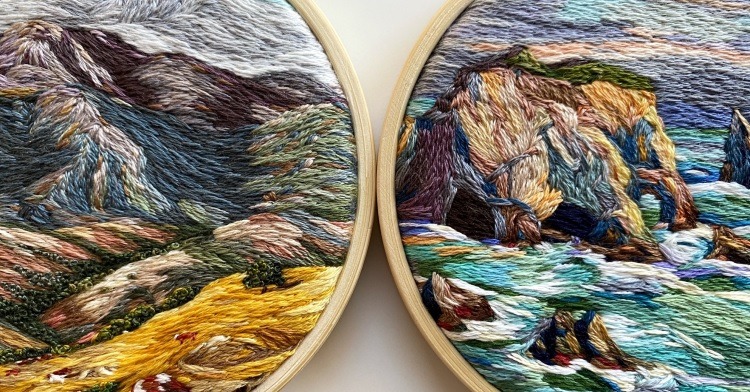
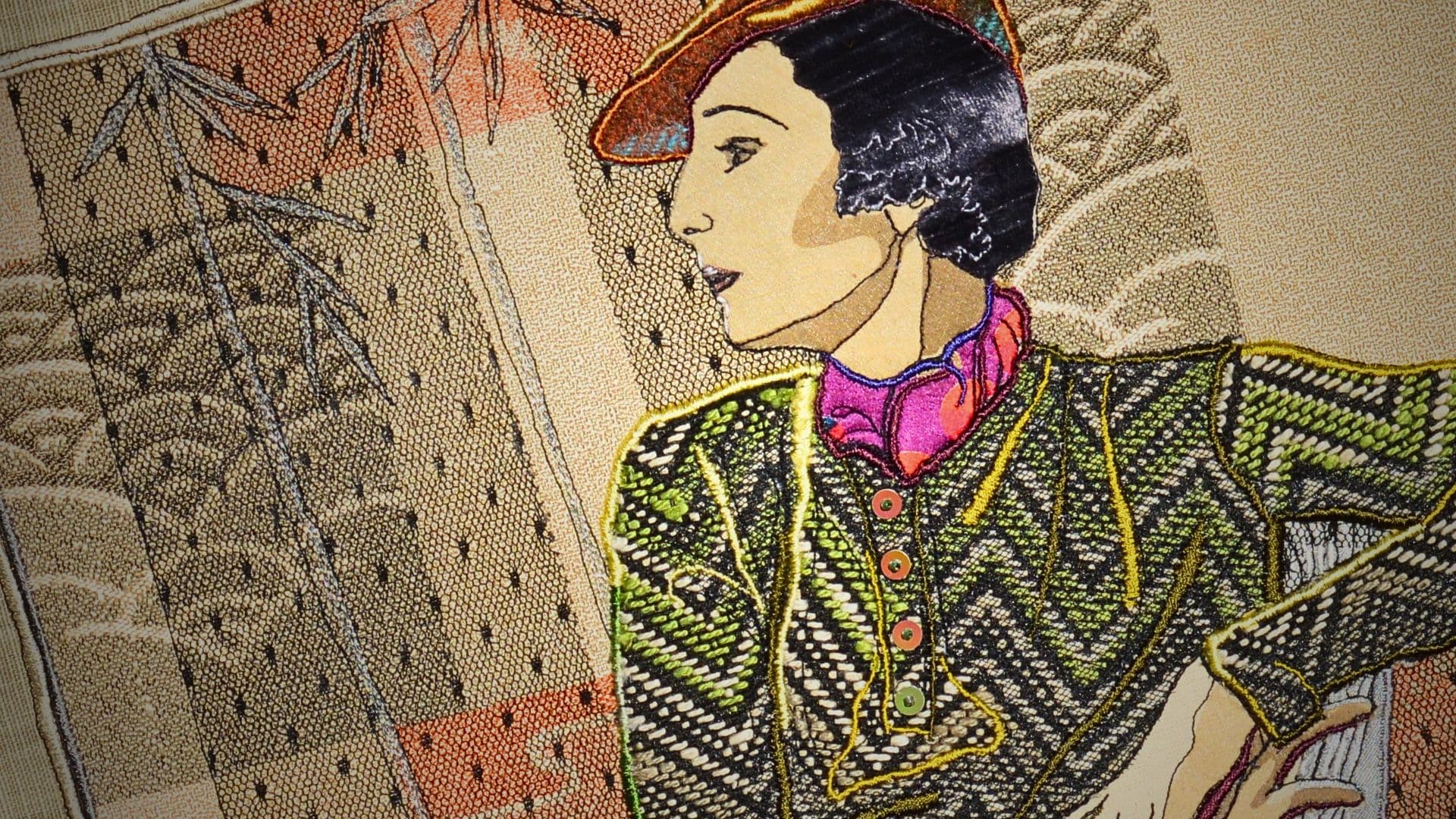
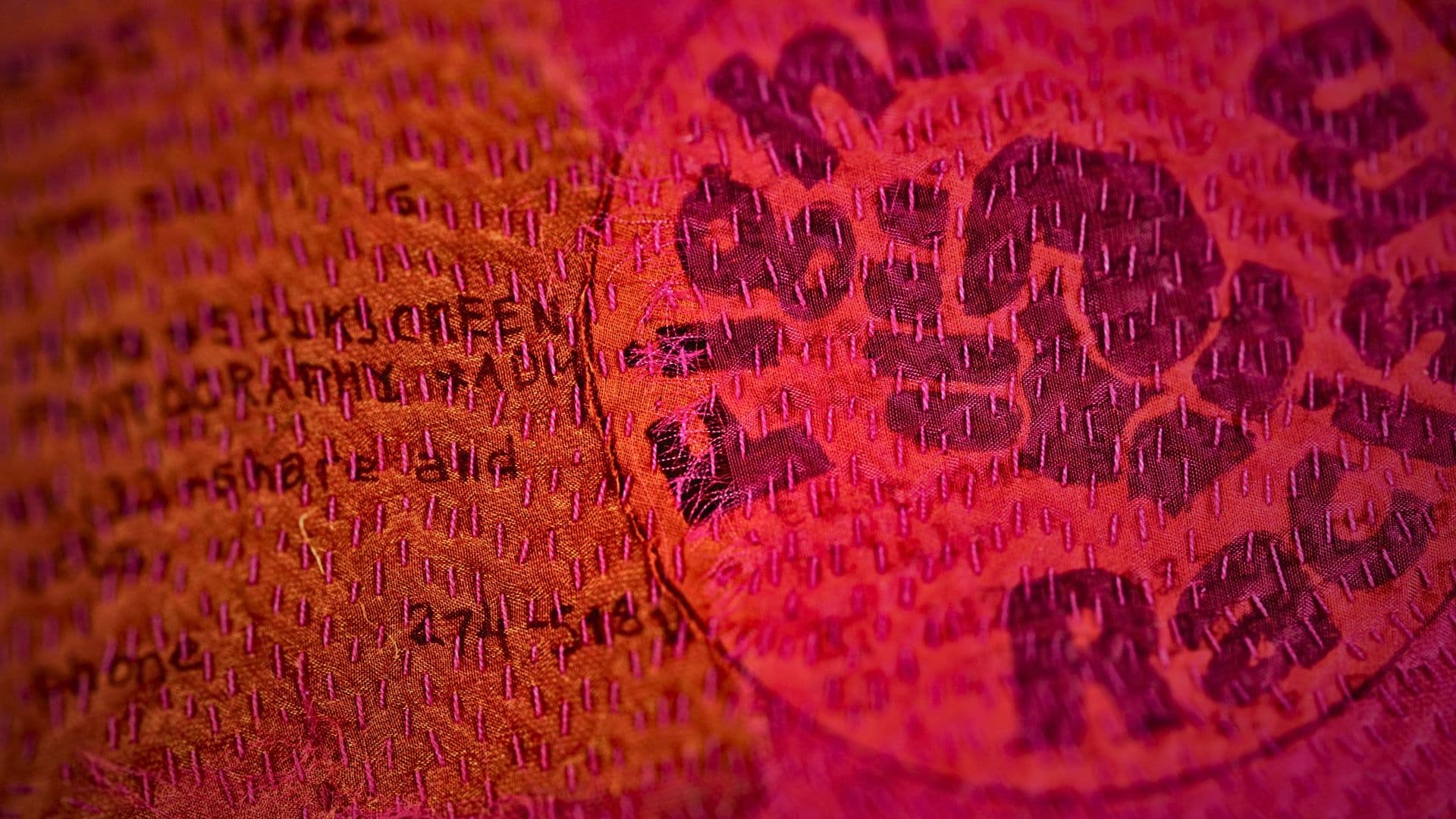
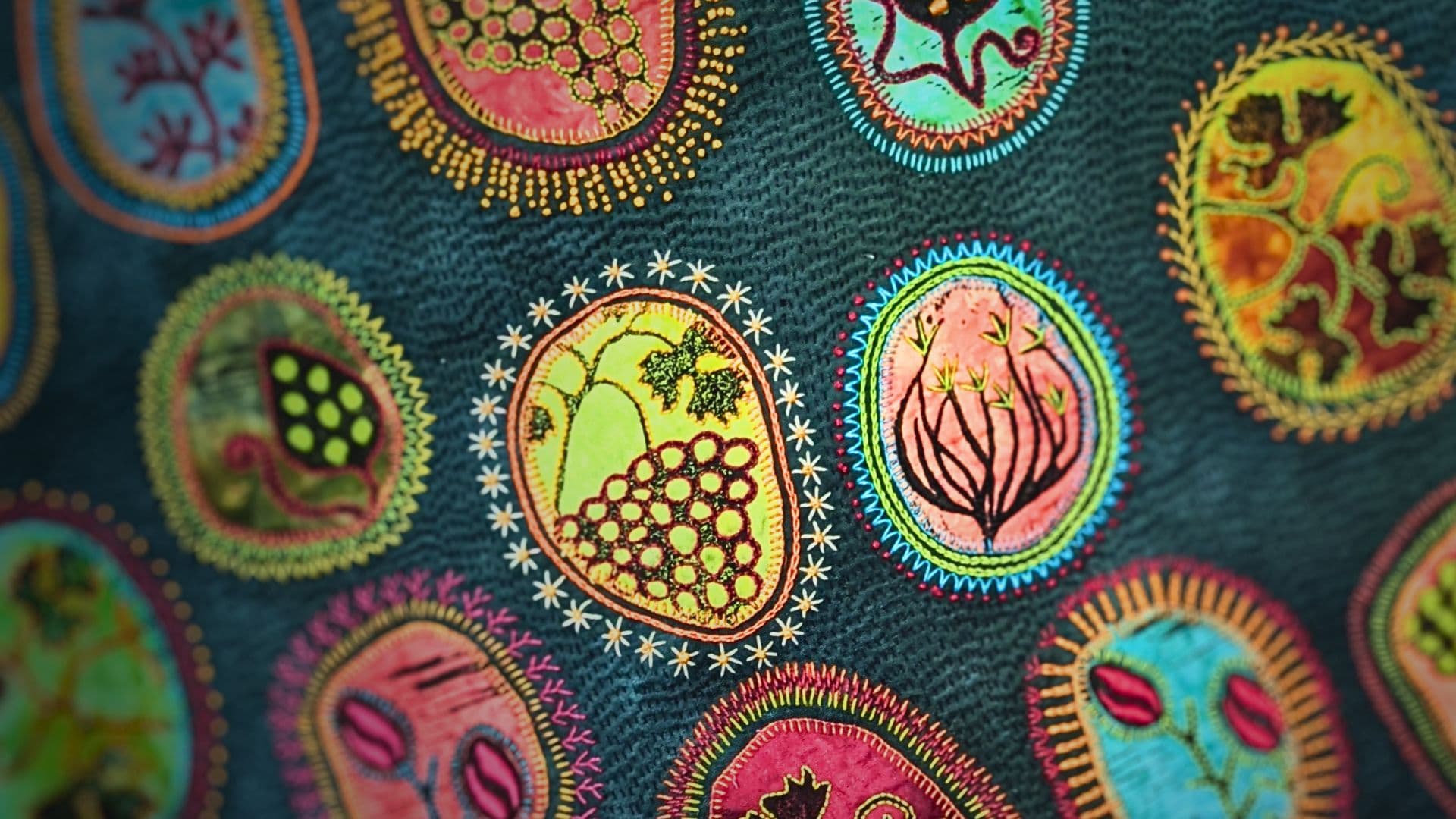
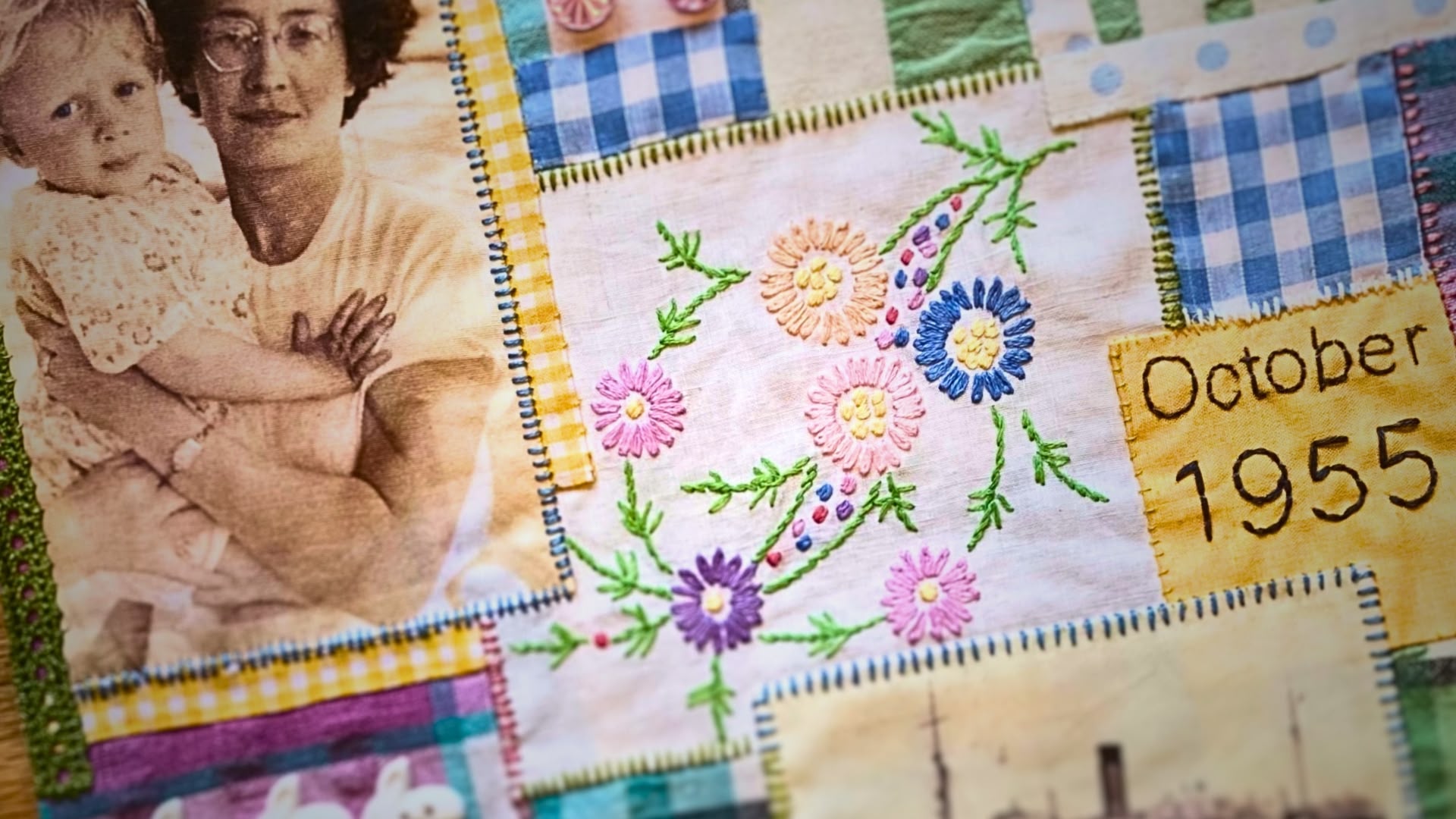
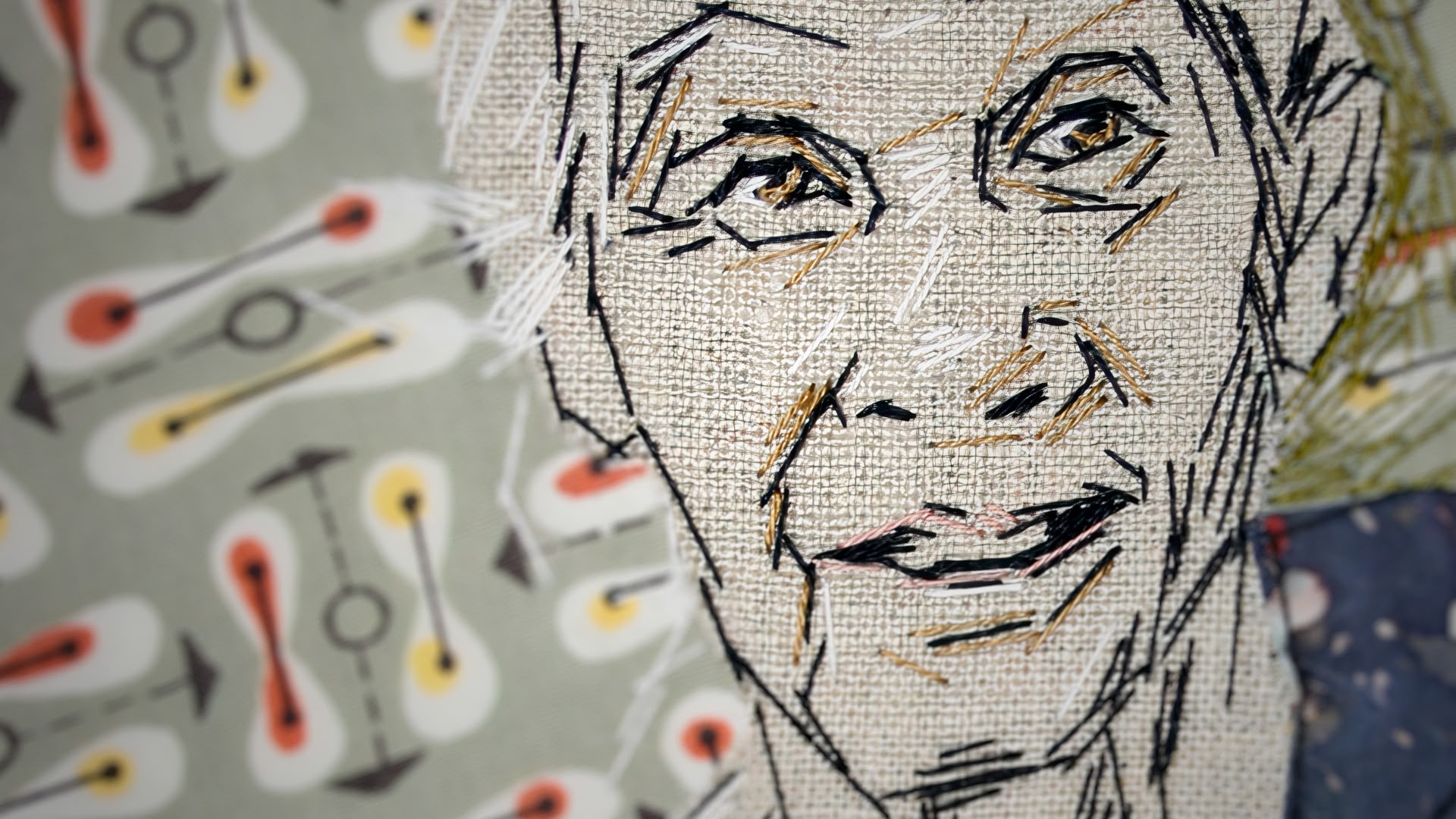
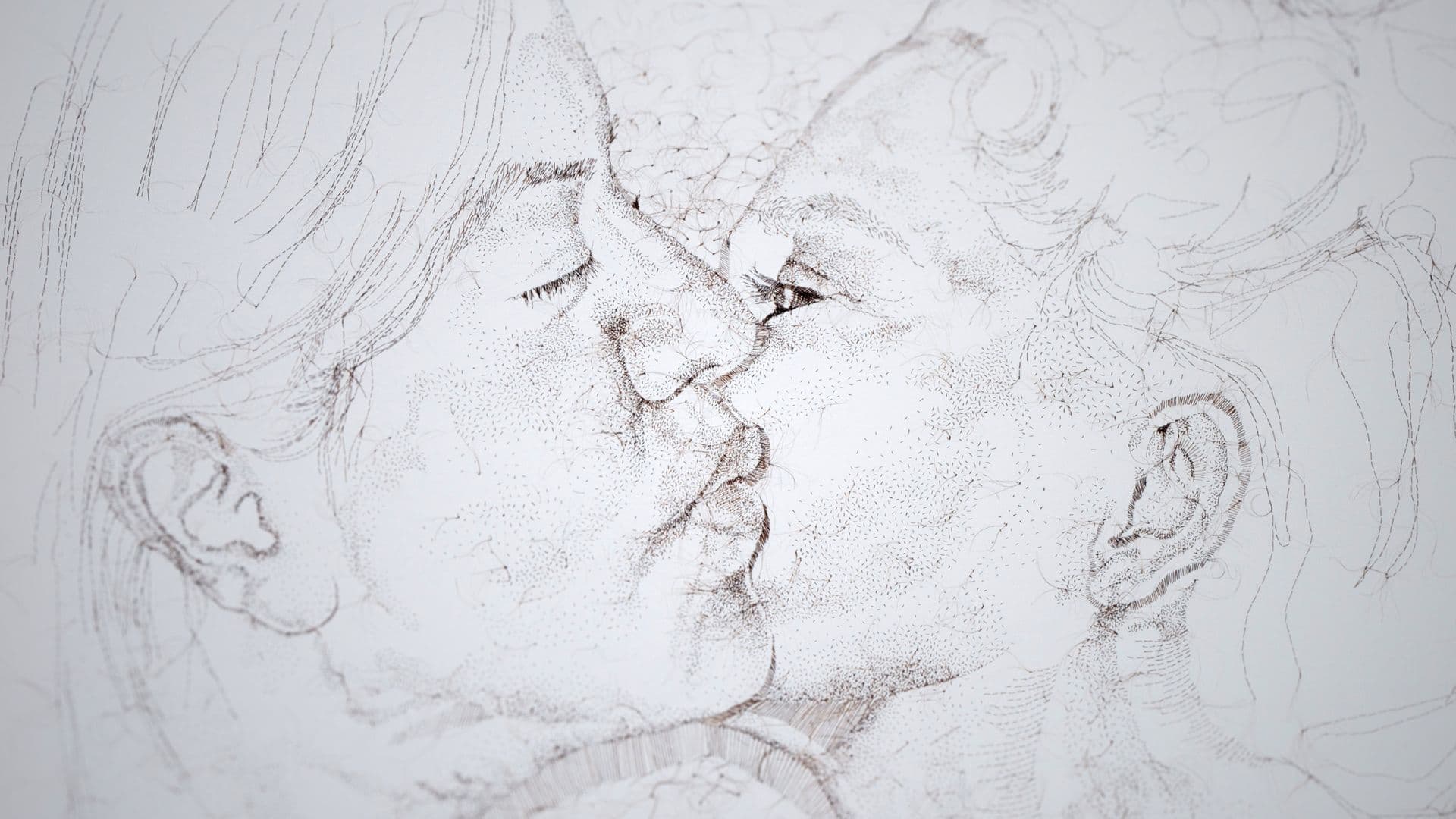
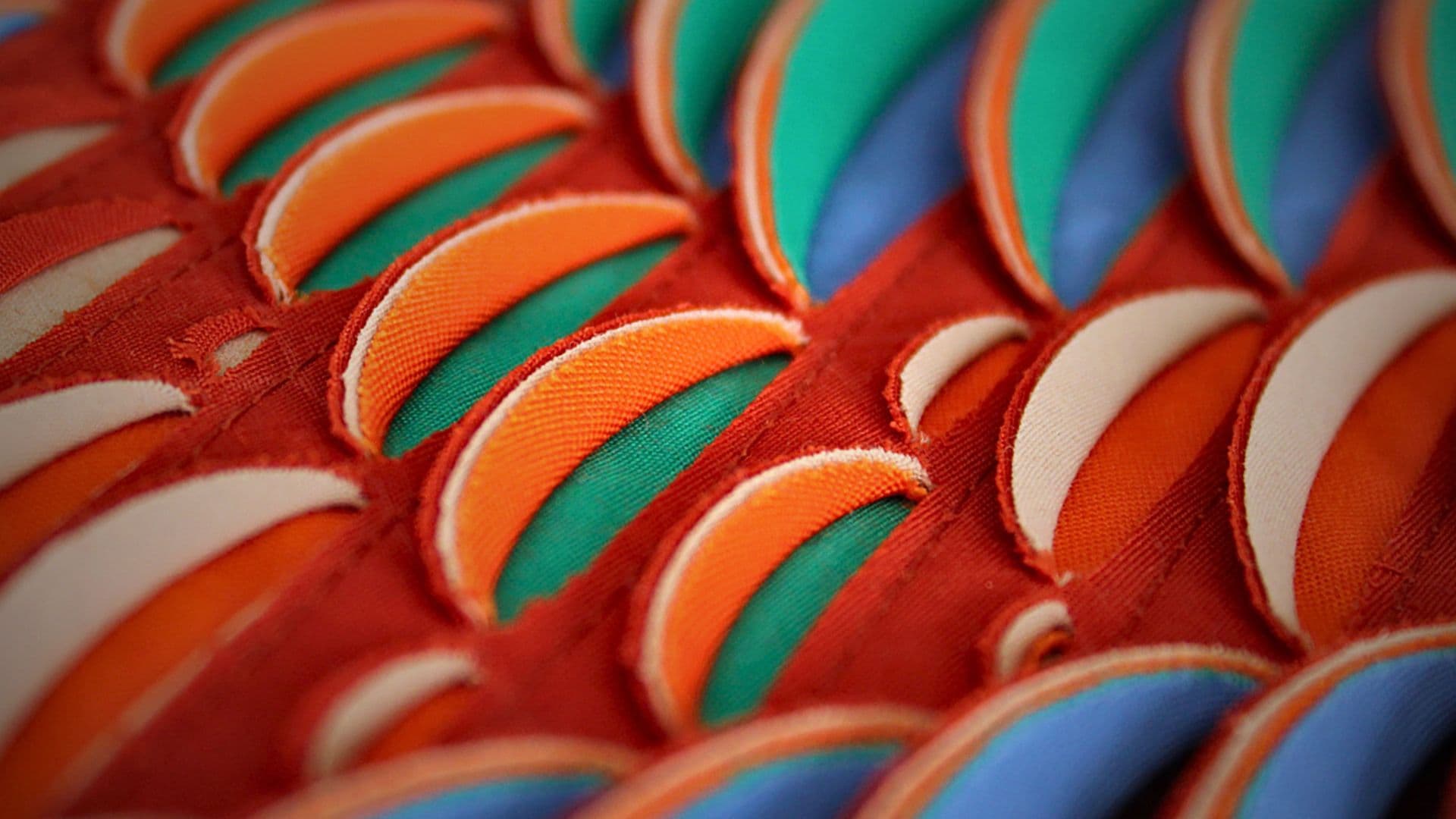

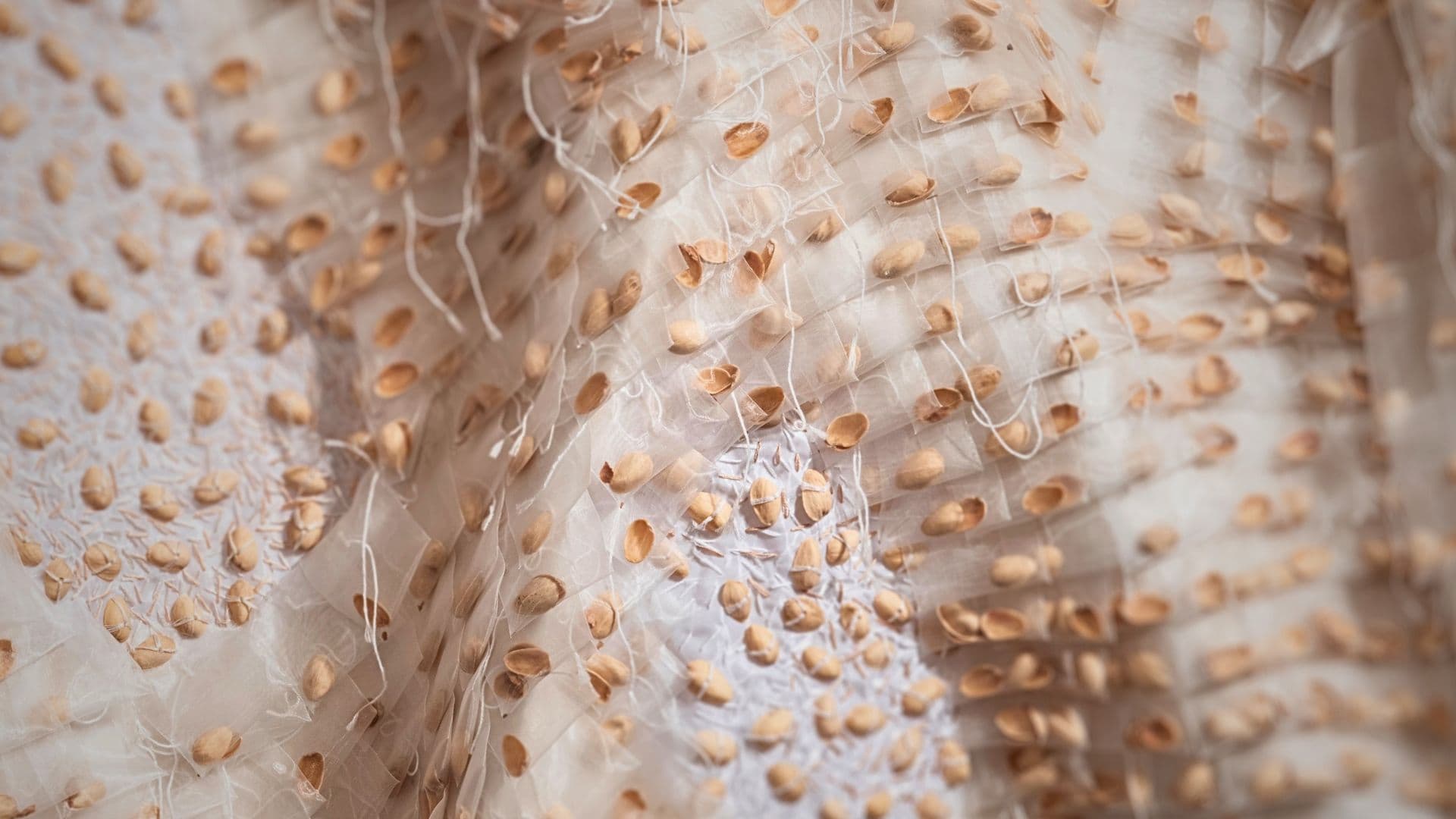
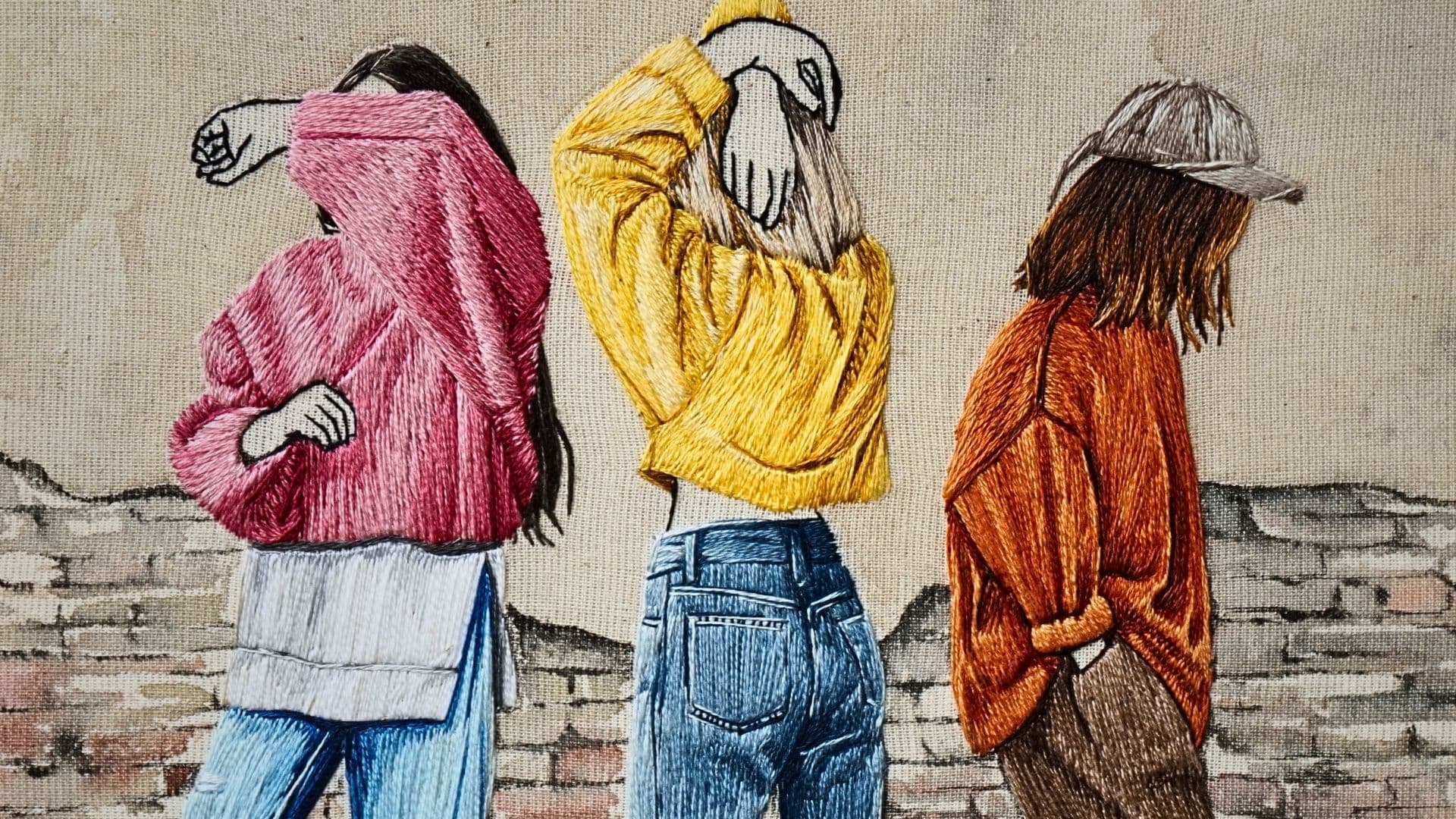
6 comments
Triballier Mireille
Magnifique travail de ce que nous pouvons qualifier de peinture à l’aiguille. Il semble que le coton DMC soit le mouliné spécial. Utilisé en deux, trois brins ?
Et sur quel type de toile ?
Cordialement.
amberley
Hello, Cassandra uses stranded cotton and tightly woven, plain weave, medium weight fabrics, with little or no stretch,
such as 100% cotton or calico (US muslin.)
Chris Kramer
Thank you for giving me such inspiring stories of Fiber artists. I am a new member but have thoroughly enjoyed the newsletter so far and look forward to the next “ creative secrets” they share.
Cath S
Very stimulating & inspiring to see that you can create such beauty on such a small scale. For anyone new to embroidery this is an ideal project as the small size is not so intimidating as working on a larger scale can be. The use of a limited range of stitches & the use of easily obtainable embroidery thread illustrating that such breathtaking landscapes can be created is amazing especially after being self-taught & only embroidering for 3 years. Your colour blending is superb as is the layering effects you have achieved. Congratulations & best wishes for your continued success & creativity in 2024.
Jan Booth
Hooray!! At last a straightforward, non-abstract embroidery. Thank you.
Chris Lovie-Tyler
These are amazing!